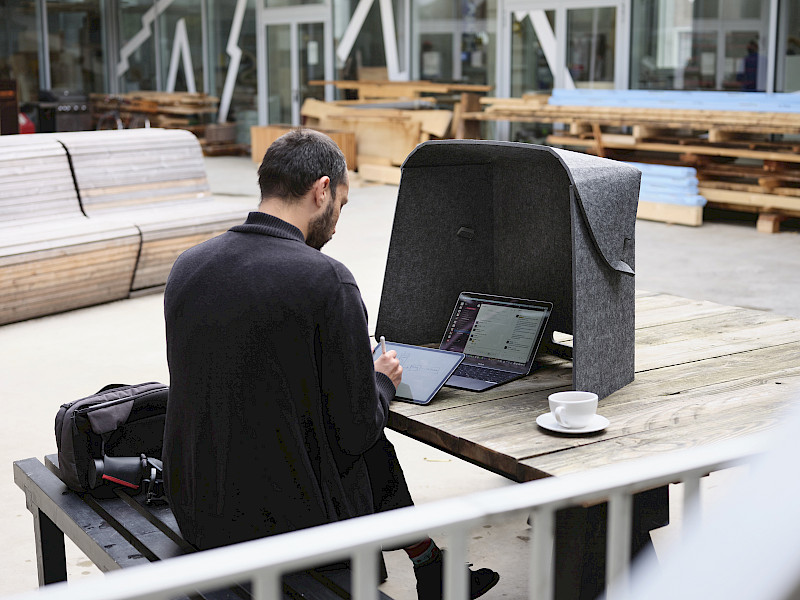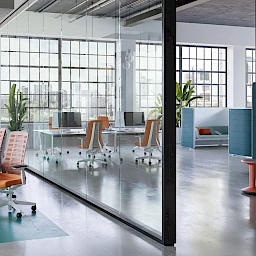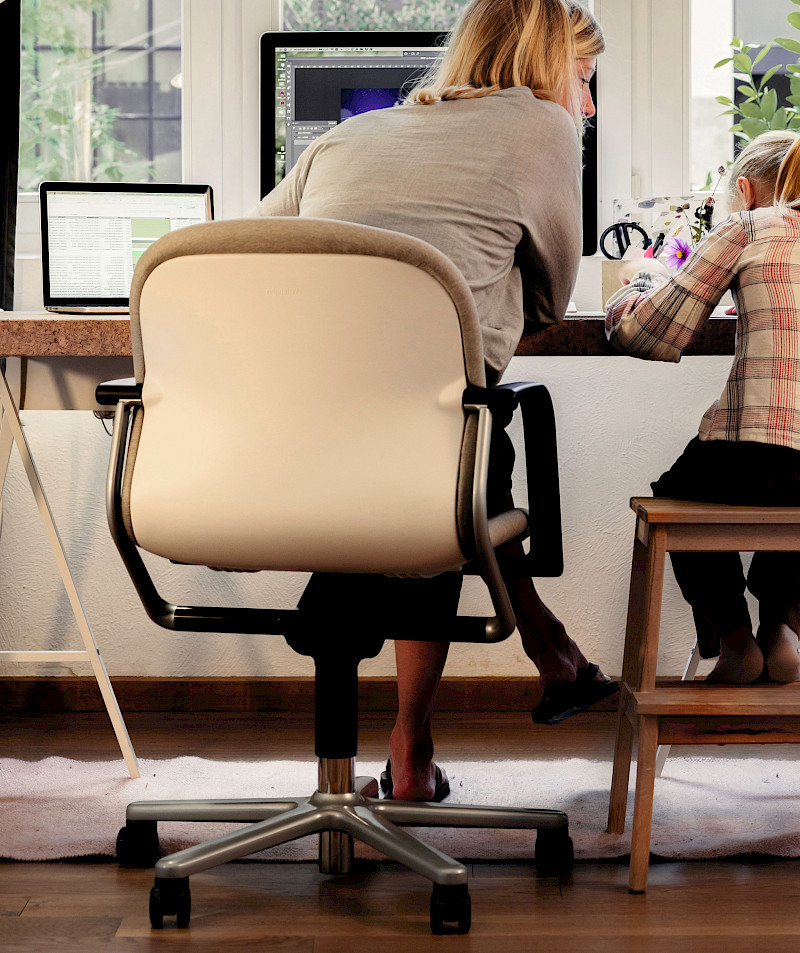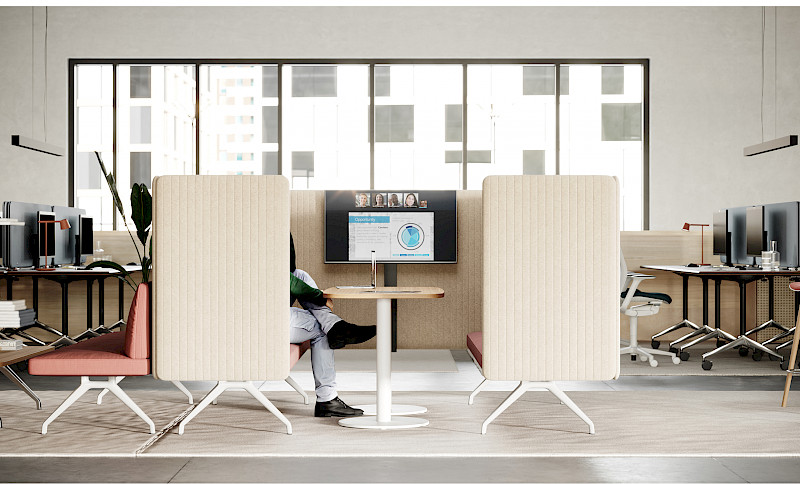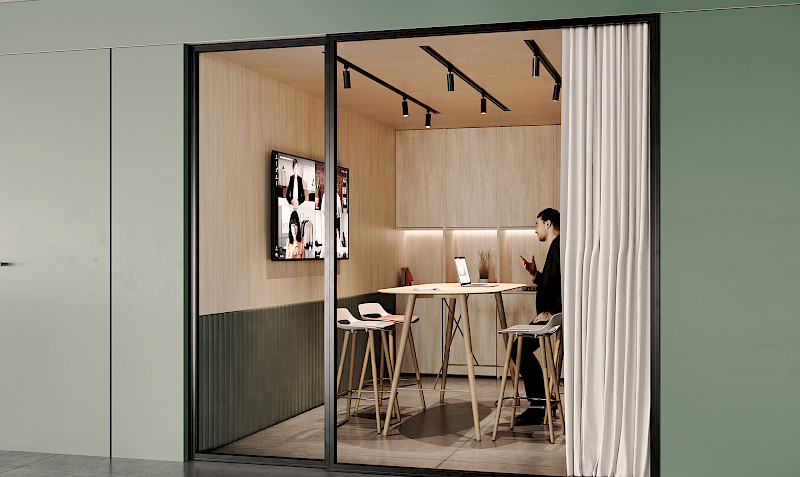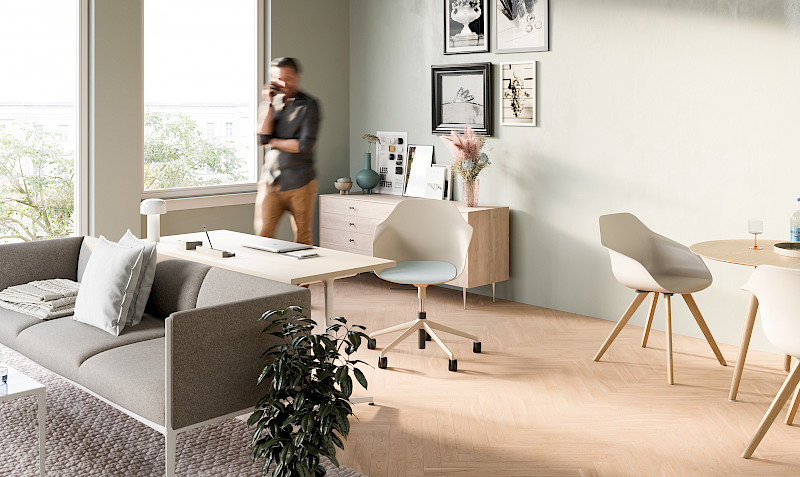During the pandemic, people got used to remote office work, which will continue to be an option in future too. There’s nothing really new about hybrid office work because blending the analog and digital worlds is what working with computers is all about. On the other hand, what is new is that people are changing where they work from and adopting hybrid collaboration approaches. To ensure hybrid working is a success, several factors need to be taken into account. Here’s a brief overview of the process, situations and key aspects to consider:
Deep work at home or elsewhere
Remote working is possible in home offices, trains, cafés or co-working spaces. As long as we can access our data, the traditional hybrid style of person-to-computer interaction can take place anytime or anywhere. However, this model requires the pain points to be addressed, so that workers stay healthy and productive. A glance at the figures on people who are overweight, have backache or depression, is thought-provoking. These numbers indicate that, alongside computers and the associated peripheral devices, lighting, privacy solutions and protection from glare are vital. To facilitate concentration and cut down on distractions, it’s equally crucial to encourage people to move.
Exclusively online collaboration
Remote workers can’t collaborate anywhere with too many distractions or a lack of privacy. Camera heights, microphones, lighting and backgrounds are also key factors that make hybrid co-working successful. But however good the conditions are, purely online collaboration still has its limits. Eye contact only occurs when two people are talking to one another. If more people are involved, interaction and powers of concentration drop. Which is why it’s good etiquette to leave cameras on, not take other calls or engage in other tasks at the same time. And it’s important not to carry over habits formed from virtual collaboration to the office. Otherwise, workers who share an office might still continue to talk to one another with their headsets on and forget the noise and distraction they cause to co-workers! Therefore, different practices and room concepts are required for hybrid meetings in the office.
On-site teams joined by people online
If people are joining an on-site meeting online, the group should always pick an area with visual and acoustic privacy, or its own room with a meeting table. This is the only way of harnessing the benefits of face-to-face engagement. Screened-off sofas are ideal for meetings of two to four people. Larger groups should seek out closed-off rooms with the tables to match. Table layouts, the size and direction of the monitor, position and focus of the camera as well as the lighting must enable eye contact in both directions. Sound transmission is good with 360° microphones and integrated loudspeakers placed in the center. A moderator should be appointed to ensure that everyone has a chance to talk. Beside the need to provide the right equipment and environments, these new forms of collaboration primarily require behavioral changes.
Conferences between teams in different places
These are traditional video conferences where groups convening in different places join each other online. This situation requires settings that are as similar as possible to create the same conditions at different sites.
If the number of participants stays the same, video conference rooms are recommended where a semicircular conference table system is placed in front of a screen and reflects the table shared in the other location. Scissoring tables are ideal for conference rooms used for analog or hybrid meetings. When opened up, they allow good eye contact with the group on the screen. When pushed together, an oval-shaped table is a communicative option for in-person meetings.
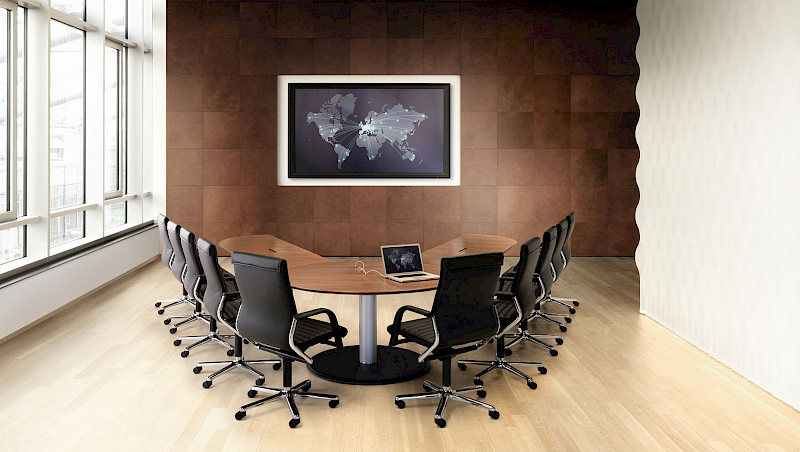

Hybrid design
Design should also reflect the hybrid approach. To keep people productive and healthy, remote working requires home offices to look and feel professional too. By the same token, to entice staff to come back to the workplace for at least some of the time, office furniture needs to maintain the kind of mood you’d expect in homes.



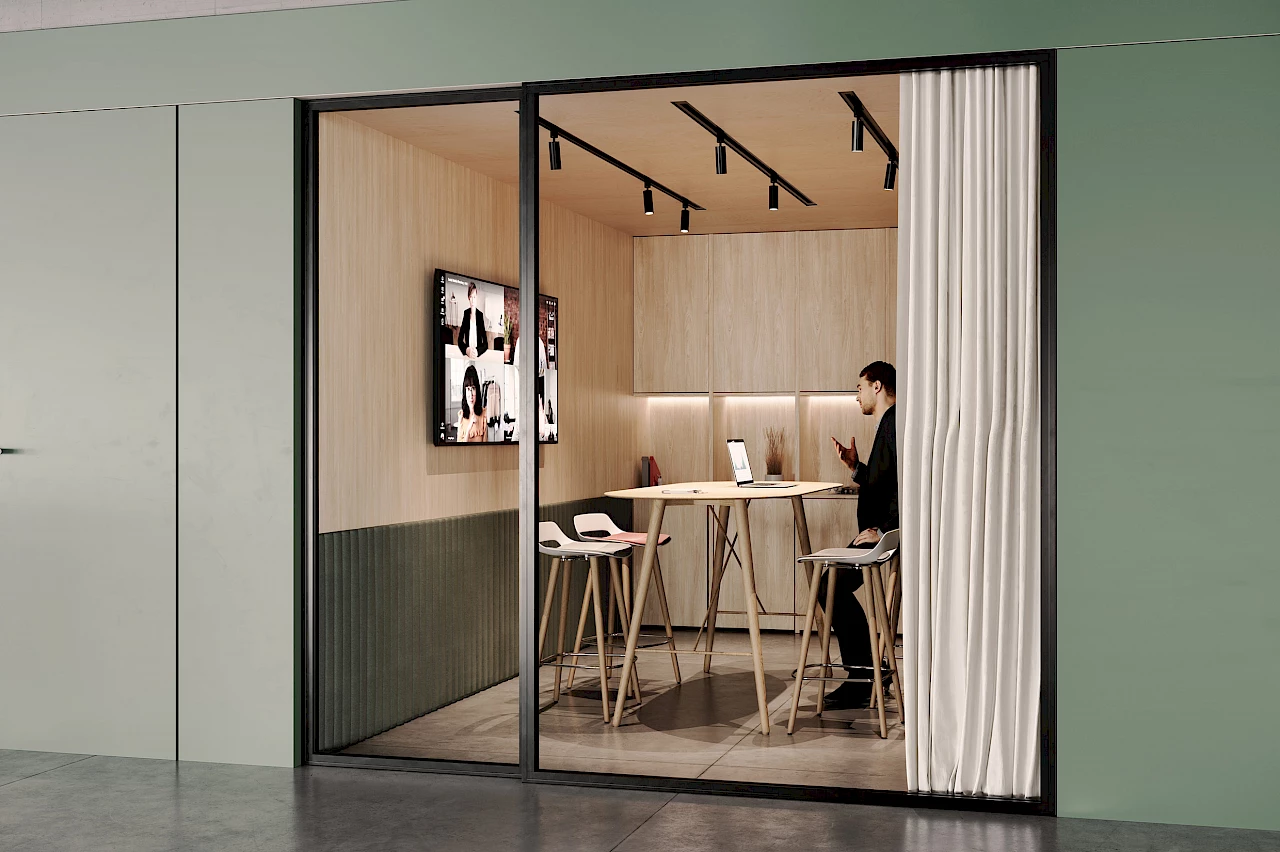
 Burkhard Remmers
Burkhard Remmers 